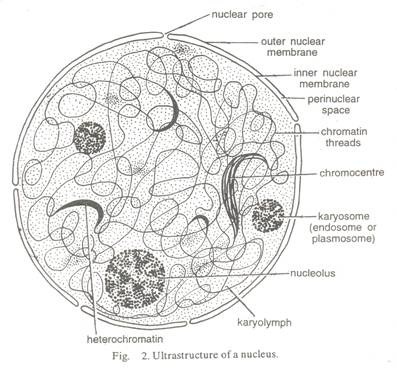-
Gallery of Images:

-
Abstract. All cells can be assigned to one of two categories based on the complexity of cellular organization, eukaryotes and prokaryotes. Eukaryotes possess, among other distinguishing features, an intracellular dynamic membrane system through which there is a constant flow of membranes scaffolded by an internal cytoskeleton. 1) Eukaryotic cell surrounds and engulfs bacterium. 3) Eukaryote supplies bacterium with protection and carbon compounds and the bacterium supplies eukaryote with ATP. All complex life, including plants, animals and fungi, consists if of eukaryotic cells, cells with a nucleus, transport mechanisms and often organelles like mitochondria that perform the functions an organism needs to stay alive and healthy. Humans have 220 different kinds of eukaryotic cells which. The endosymbiotic theory of the origin of eukaryotic cells states that all the individuals are evolved from the same individual. In accordance with the endosymbiotic theory of origin of eukaryotic cells, the eukaryotes have evolved from number of cells that happened to join together and form a. Eukaryotic cells originated from Protoeukaryote, a large anaerobic bacterium, that formed nucleus, mitochondria, chloroplasts by invagination of plasmamembrane and enclosed genetic material inside double membrane. Prokaryotic cells are usually much smaller than eukaryotic cells. Therefore, prokaryotes have a larger surfaceareatovolume ratio, giving them a higher metabolic rate, a higher growth rate, and as a consequence, a shorter generation time than eukaryotes. Prokaryotic cells are not as complex as eukaryotic cells. They have no true nucleus as the DNA is not contained within a membrane or separated from the rest of the cell, but is coiled up in a region of the cytoplasm called the nucleoid. On the Origin of Mitosing Cdls LYNN SAGAN Department of Biology, Boston University Boston, Massachusetts, U. (Received 8 June 1966) A theory of the origin of eukaryotic cells (higher cells which divide by classical mitosis) is presented. By hypothesis, three fundamental organelles. The origin of the eukaryotesthe kingdom of life that includes all of the higher plants and animals, including ourselvestook place in the heavily obscured early history of the earth. Origin of eukaryotic cells: was metabolic symbiosis based. sea microorganisms and evolution nearly 10, 000 times the volume of prokaryotic cells. Eukaryotic cells also have a nucleus enclosed by a double membrane and show com The title on the spine of one book happened to catch my eye, The Origin of Eukaryotic Cells. I didn't know what eukaryotic cells were. From atoms to cells, from genes to proteins, from populations to ecosystems, biology is the study of the fascinating and intricate systems that make life possible. Eukaryotic cells also contain organelles, including mitochondria (cellular energy exchangers), a Golgi apparatus (secretory device), an endoplasmic reticulum (a canallike system of membranes within the cell), and lysosomes (digestive apparatus within many cell types). Few questions capture the imagination of biologists like the origin of eukaryotic (nucleuscontaining) cells such as our own, and as additional support accumulated (e. , 2, 4 ) Lake's eocyte hypothesis garnered considerable attention. Modern eukaryotic cells, says Buzz Baum, can be interrogated in the context of the new theory to answer many of their unexplained features, including why nuclear events appear to be inherited from archaea while other features seem to be derived from the bacteria. The endosymbiotic hypothesis for the origin of the eukaryotic cell has been applied to the origin of the mitochondria and chloroplasts. However as has been pointed out by Mereschowsky in 1905, it should also be applied to the nucleus as well. Were eukaryotic cells just a part of Earth's midlife crisis? Or were they a way to liven up the birthday party? Life started in the water, and so did the first eukaryotes. Although the origin of the eukaryotic cell has long been recognized as the single most profound change in cellular organization during the evolution of life on earth, this transition remains poorly understood. Models have always assumed that the nucleus and endomembrane system evolved within the. Some of the oldest cells on Earth are singlecell organisms called bacteria. Fossil records indicate that mounds of bacteria once covered young Earth. Some began making their own food using carbon dioxide in the atmosphere and energy they harvested from the sun. This process (called photosynthesis. Credit: Cold Spring Harbor Press (Phys. org) In Part I of our review of the new book The Origin and Evolution of the Eukaryotic Cell we talked about the acquisition of endosymbionts by cells. The origin of the eukaryotes is a fundamental scientific question that for over 30 years has generated a spirited debate between the competing Archaea (or three domains) tree and the eocyte tree. As eukaryotes ourselves, humans have a personal interest in our origins. The Origin of Eukaryotic Cells Michael Buratovich T he cells of modern organisms come in two main structural types: prokaryotic and eukaryotic. Prokaryotic cells, which are represented by the eubacteria and archaea, contain precious little internal compartmentalization and have transcriptionally Ever since the elucidation of the main structural and functional features of eukaryotic cells and subsequent discovery of the endosymbiotic origin of mitochondria and plastids, two opposing. The cells of modern organisms come in two main structural types: prokaryotic and eukaryotic. Prokaryotic cells, which are represented by the eubacteria and archaea, contain precious little internal compartmentalization and have transcriptionally coupled translation, whereas eukaryotic cells, which. Origin of Eukaryotes Time Period: Proterozoic The oldest eukaryotic fossil is approximately 1. The origin of the eukaryotes must have appeared before because the fossil is of a relative complex singlecelled organism. Endosymbiotic Theory of the Origin of Eukaryotic Cells. Endosymbiotic theory, which is often referred to as symbiogenesis, is an evolutionary theory that attempts to explain the origin of eukaryotic cells. It is a hypothesis which essentially postulates that prokaryotes were what gave rise to the first eukaryotic cells and, if true, would. Those cells were quite simple but, at some point over the course of evolution, they gave way to a more complex cellular lineage: the eukaryotes, or cells with a nucleus. Eukaryotic definition, any organism having as its fundamental structural unit a cell type that contains specialized organelles in the cytoplasm, a membranebound nucleus enclosing genetic material organized into chromosomes, and an elaborate system of division by mitosis or meiosis, characteristic of all life forms except bacteria, bluegreen algae, and other primitive microorganisms. Like animal cells, plant cells belong to the type known as eukaryotic. The most distinctive feature of these is that they have a cell nucleus, and the DNA molecule in which their genetic information is encoded lies within this nucleus. Eukaryotic cells are fundamentally different from those of bacteria and archaea at almost every level of organization, starting with their physical size. These major differences in cellular architecture formed the original basis for the dichotomy. The origin of eukaryotic cells was largely a mystery until a revolutionary hypothesis was comprehensively examined in the 1960s by Lynn Margulis. The endosymbiotic theory states that eukaryotes are a product of one prokaryotic cell engulfing another, one living within another, and evolving together over time until the separate cells were no. The title on the spine of one book happened to catch my eye, The Origin of Eukaryotic Cells. I didn't know what eukaryotic cells were. The endosymbiotic hypothesis for the origin of the eukaryotic cell has been applied to the origin of the mitochondria and chloroplasts. However as has been pointed out by Mereschowsky in 1905, it. Molecular sequence data are beginning to provide important insights into the evolutionary origin of eukaryotic cells. Global phylogenies of numerous protein sequences indicate that the eukaryotic cell nucleus is a chimera, which has received major contributions from both a Gramnegative eubacterium and an archaebacterium. the origin of the eukaryotic cells, particularly as it relates to the Archaea. Explain the apparition of the millions of different species on the Earth and their adaptation to many and diverse habitats. Cite some examples in your answer. The hypothesis that eukaryotic cells evolved from a symbiotic association of particularly well supported by studies of mitochondria and chloroplasts, which are thought to have evolved from bacteria living in large cells. Both mitochondria and chloroplasts are similar to bacteria in size, and like bacteria, they. The transition from prokaryote to protoeukaryote to the last eukaryotic common ancestor (LECA) entailed conservation, modification, and reconfiguration of preexisting genetic circuits via mutation, horizontal gene transfer (HGT), endosymbiosis, and selection, as detailed in previous articles of this collection. Eukaryotic cells are larger than prokaryotic cells and have a true nucleus, membranebound organelles, and rodshaped chromosomes. The nucleus houses the cells DNA and directs the synthesis of. The year 1970 saw the publication of Origin of Eukaryotic Cells by Lynn Margulis. This influential book brought the exciting and weighty problems of cellular evolution to the scientific mainstream, simultaneously breaking new ground and rediscovering the decadesold ideas of German and Russian biologists. Eukaryotic cells are defined as cells with membranebound organelles and a nucleus. Eukaryotic cells are one of two types of cells: eukaryotes and prokaryotes. Many different types of organisms have eukaryotic cells. These include plants, animals, fungi, and protists. The great differences in the cell cycles of prokaryotic cells and eukaryotic cells could be explained if the cyclins, some of the serinethreonine kinases (found in our ESPs), and the cytoskeleton came from the host cell or chronocyte. The Evolution of Eukaryotic Cells GettyStocktrek Images As life on Earth started to undergo evolution and become more complex, the simpler type of cell called a prokaryote underwent several changes over a long period of time to become eukaryotic cells. Certain eukaryotic organelles had evolved from smaller prokaryotic cells that had taken up residence in the cytoplasm of larger hosts. The idea she resurrected was called the endosymbiotic theory A theory of the origin of eukaryotic cells (higher cells which divide by classical mitosis) is presented. By hypothesis, three fundamental organelles the mitochondria, the photosynthetic plastids and the (92) basal bodies of flagella were themselves once freeliving (prokaryotic) cells. Origin of eukaryotic cells: evidence and research implications for a theory of the origin and evolution of microbial, plant, and animal cells on the Precambrian earth. [Lynn Margulis.
-
Related Images:











